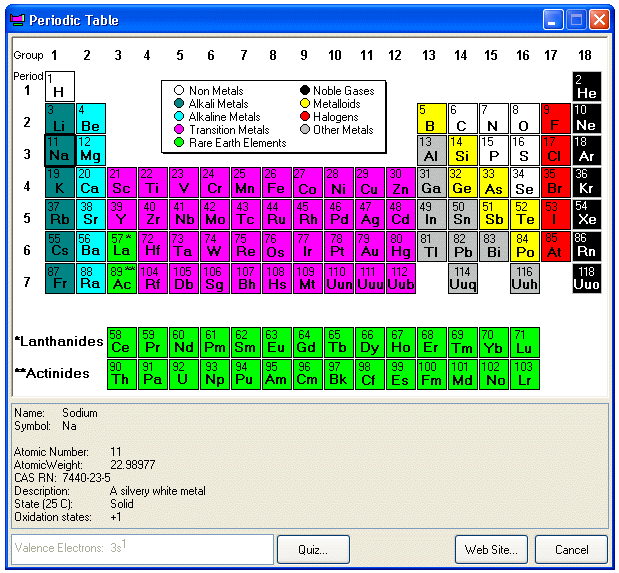
The Chemical Abstracts Service registry number is a unique identifier of a particular chemical, designed to prevent confusion arising from different languages and naming systems.ĭata for this section been provided by the British Geological Survey.Īn integrated supply risk index from 1 (very low risk) to 10 (very high risk). Where more than one isotope exists, the value given is the abundance weighted average.Ītoms of the same element with different numbers of neutrons. This is approximately the sum of the number of protons and neutrons in the nucleus. The mass of an atom relative to that of carbon-12. The transition of a substance directly from the solid to the gas phase without passing through a liquid phase.ĭensity is the mass of a substance that would fill 1 cm 3 at room temperature. The temperature at which the liquid–gas phase change occurs. The temperature at which the solid–liquid phase change occurs. The arrangements of electrons above the last (closed shell) noble gas.

These blocks are named for the characteristic spectra they produce: sharp (s), principal (p), diffuse (d), and fundamental (f). The atomic number of each element increases by one, reading from left to right.Įlements are organised into blocks by the orbital type in which the outer electrons are found. Members of a group typically have similar properties and electron configurations in their outer shell.Ī horizontal row in the periodic table. You can also deduce whether an element is a metal, non-metal, metalloid or a noble element from their position in the periodic table.A vertical column in the periodic table. In fact, according to the outermost unfilled electrons shells of atoms, the elements are grouped as ‘s-block’, ‘p-block’, ‘d-block’ and ‘f-block’ elements. To Know the Electronic Configuration of Elementsīy knowing the atomic number of the element from the periodic table and the group (column) it belongs to, you can deduce what is the electronic configuration of the element. Atomic weight values are necessary for most of the analytical chemistry calculations. If you need to find the atomic weight of any element, you can find it listed in the periodic table in the square boxes allotted to each element. By checking out the atomic number associated with the symbol, you can identify the actual element. All chemical reactions are written using abbreviated names of elements and the periodic table can identify the actual element for you, from the symbol used. To Know the Element Names and Symbolsįirstly, using the periodic table, you can trace the actual name of an element, from its abbreviated name. In the square denoting every element in the periodic table, the atomic numbers are printed at the top. Atomic number is the number of protons that make up its nucleus, which is equal to the number of electrons revolving around it. You can find the atomic number of any element from the periodic table. When the elements are arranged in this fashion, you can observe periodicity in their properties, according to similarities in electronic configuration. They are arranged in a grid pattern with a total of 18 columns called ‘groups’ and 7 rows called ‘periods’. Out of the need to classify and identify the relations between these different atoms, a periodic table of elements was created, in which all the chemical elements were arranged according to the atomic number. There are as many as 92 different naturally occurring atoms of different kinds which bond with each other to form the complex forms of matter all around us. So is everything made up of the same kind of atoms? No. Not only do we know all about atoms today, but stellar physics has also solved the mystery of how these atoms were created.

In the 20th century, that task was accomplished and now we know that everything is made up of atoms. Since ancient times, people have occupied themselves with the task of finding the ultimate building blocks of matter. In this ScienceStruck article, you will find an explanation of what is the periodic table used for and why having it hung in chemistry labs and classrooms is necessary.


It is one of the most important reference tables in science which lists all the types of atoms which make our physical world. On entering your chemistry lab, you are bound to find a big chart labeled as ‘Periodic Table of Elements’ hung over the wall for reference.


 0 kommentar(er)
0 kommentar(er)
